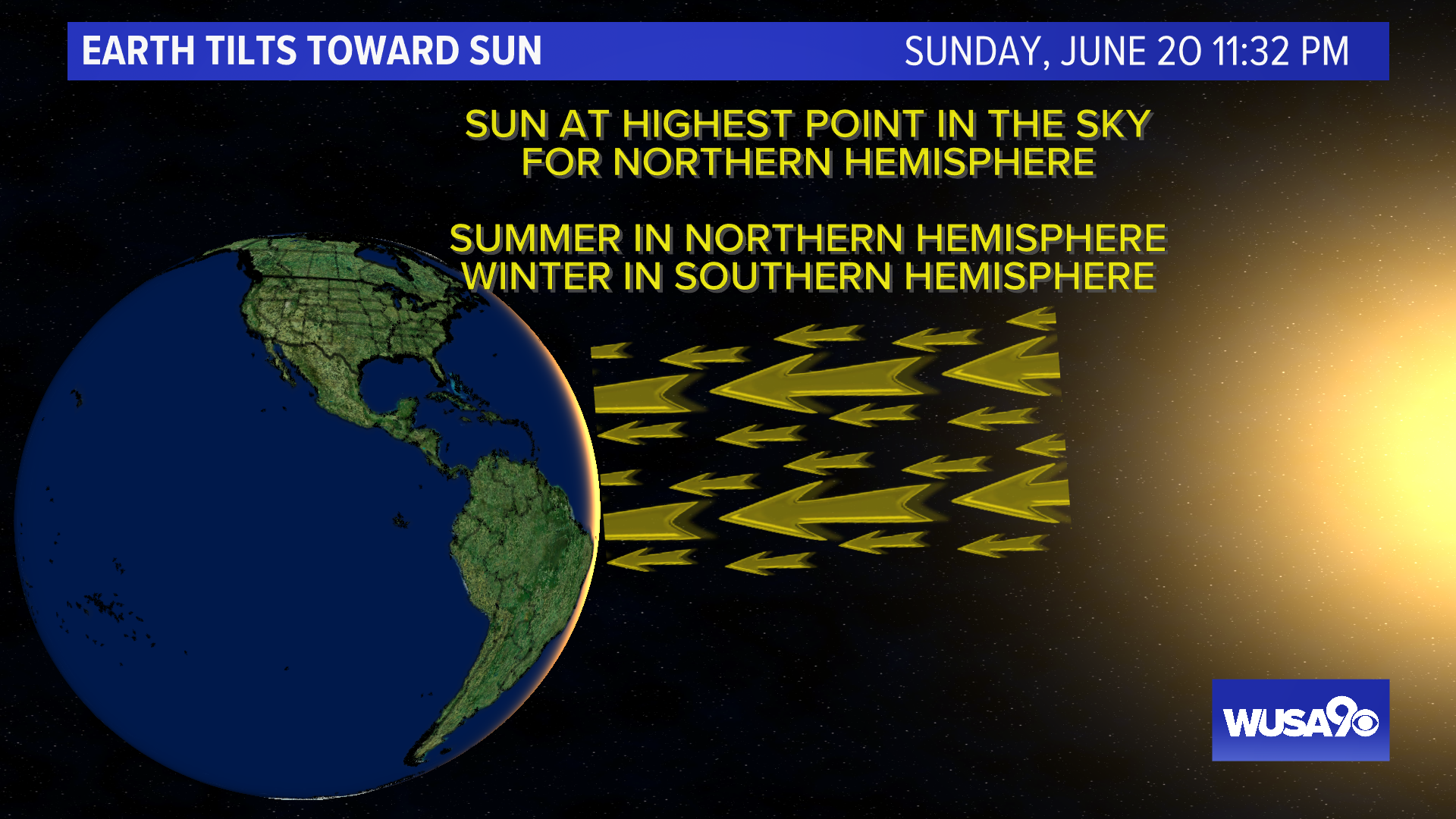The summer solstice marks the beginning of astronomical summer in the northern hemisphere and the beginning of winter for our friends in the southern hemisphere. Summer begins Sunday at 11:32 p.m. ET.
Summer solstice means ‘sun standstill’. The earth tilts on its axis changing the angle of the sun overhead creating an apparent migration of the sun northward in spring and summer. At the beginning of spring, the sun is directly over the equator resulting in equal day and night for both hemispheres. The summer solstice marks the farthest northerly point the sun reaches before moving southward until the winter solstice.
Climate is all about the angle of the sun. Yes, the days get longer in spring and summer and yes, the jet stream retreats north but the angle of the sun is what drives the climate changes.
As the earth tilts, the sun appears to have a northward migration in the sky after the winter solstice and ending upon the summer solstice, which means "summer standstill." We have already lost a minute on sunrise since June 18 (from 5:42 a.m. to 5:43 a.m.) but the sunset will remain at 8:37 p.m. until July 6.
Starting on July 6, the sunset times will gradually become earlier and earlier until the Winter Solstice in December. That’s in addition to having sunrise continue to gradually become later until the Winter solstice as well.
Meteorologists differentiate between astronomical summer and meteorological summer. Meteorologists and climatologists commonly look at seasons in three-month blocks for ease of calculating average temperatures and precipitation amounts for a given location. For instance, “meteorological” summer runs from June 1 through August 31. Using the same standard, September 1 is when “meteorological” fall begins; December 1 is when “meteorological” winter commences, and “meteorological” spring arrives on March 1.
Sunday’s summer solstice is an example of an “astronomical” season. Those are what many people are more familiar with. The “astronomical” seasons are dependent on the position of the Earth in relation to the sun. The summer and winter solstices occur when the sun’s path is farthest north or south of the Earth’s equator.
The summer solstice — or the first day of “astronomical” summer — occurs on or about June 21 in the Northern Hemisphere. That’s the first day of winter in the Southern Hemisphere. The equinoxes occur when the sun passes directly over the Earth’s equator. In the Northern Hemisphere, the spring (vernal) equinox occurs around March 21 (which is the first day of “astronomical” spring) while the fall (autumnal) equinox occurs on or near Sept. 22.
It’s interesting to note that while the Summer Solstice is on or about June 21 every year, D.C.’s hottest average annual temperatures don’t actually occur for another few weeks. According to NOAA, today’s average high and low temperatures in the nation’s capital are 86°/68°. But D.C.’s hottest average daily temperatures are 89°/71° from July 7 through July 22.
Average daily temperatures gradually fall after that for the remainder of the summer and fall as the amount of daylight gradually decreases.
Sign up for the Get Up DC newsletter: Your forecast. Your commute. Your news.
Sign up for the Capitol Breach email newsletter, delivering the latest breaking news and a roundup of the investigation into the Capitol Riots on January 6, 2021.

